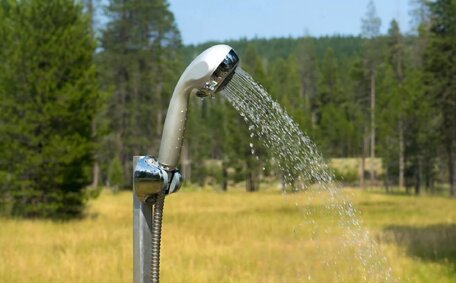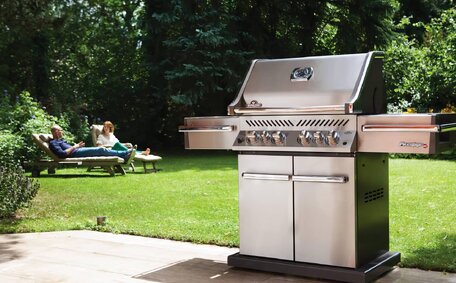Understanding the Chemistry Behind Baking Soda and Vinegar
Baking soda, also known as sodium bicarbonate (NaHCO3), is a compound with a high pH level that reacts with acidic substances to produce carbon dioxide gas. Vinegar, on the other hand, is an aqueous solution comprising 3-9% acetic acid.
When cleaning, baking soda and vinegar can be used on various surfaces to initiate a chemical reaction that’s both effective and noticeable. The mixture of baking soda and vinegar reacts vigorously, breaking down into sodium acetate, water, and carbon dioxide gas. This releases bubbles and fizz.
The chemical equation for this reaction is:
NaHCO3 (sodium bicarbonate/baking soda) + CH3COOH (acetic acid/vinegar) → CH3COONa (sodium acetate) + H2O (water) + CO2 (carbon dioxide)
The fizzing and bubbling from the reaction between baking soda and vinegar are notable as they can assist in lifting stains and grime. As it expands into gas, the baking soda can help lift stains, grease, and grime off surfaces when combined with vinegar. The mild acidity of the diluted acetic acid can also cut through soap scum and dissolve some deposits.
However, effective cleaning with baking soda and vinegar requires knowledge of their limitations for certain applications. Vinegar is acidic so it can damage some surfaces, and the reaction itself is self-limiting as it changes baking soda over into water over time. It’s essential to be cautious about the concentrations used and the types of surfaces treated.
When Baking Soda and Vinegar Can Be Useful for Minor Plumbing Issues
Clearing Sink Clogs and Slow Drains
For slow drains, pour 125 ml of baking soda followed by 250 ml of warm white vinegar down the sink. This vigorous reaction can help dislodge minor clogs. Let the mixture work for up to 10 minutes before flushing with boiling water.
Deodorising Drains and Disposals
To remove foul odours from your kitchen drain or garbage disposal, sprinkle one cup (250 ml) of baking soda, followed by an equal amount of distilled white vinegar, directly into the drain. Allow the mixture to bubble for a few minutes to cleanse and deodorize the system effectively. The carbon dioxide released helps keep your bathroom sink and pipes’ interior surfaces effectively clean.
Clearing Toilet Bowl Rings
Create a paste using equal parts of baking soda and vinegar for effective cleaning on surfaces such as stove tops. Wearing disposable gloves, apply the paste to any stains inside the toilet bowl and scrub for a thorough cleaning. Let sit 20 minutes before scrubbing clean with a toilet brush.
Unclogging Shower Heads
Mix vinegar with one tablespoon (15 ml) of baking soda and place it in a sandwich bag to facilitate an efficient reaction for cleaning. Set up a bag with a vinegar clean solution mixed with baking soda securely around the shower head overnight, allowing the fizzing reaction to tackle hard water stains, including mineral deposits. Rinse clean in the morning.
Regular use of baking soda and vinegar can manage minor clogs, but they may damage pipes if overused. For persistent or severe blockages, consider professional solutions.
Step-by-Step Instructions for Using Baking Soda and Vinegar
Safety First When Using Baking Soda and Vinegar
Always prioritise safety when using baking soda and vinegar:
- Ensure you wear gloves and eye protection, among other safety gear
- Work in a well-ventilated area
- Never mix with other cleaners like bleach or ammonia
- Rinse surfaces thoroughly afterwards
- Store mixtures safely out of reach of children and pets
Step 1: Prepare the Ingredients
Note that coloured vinegars could stain surfaces, so stick to clear vinegar for cleaning tasks.
Step 2: Combine Baking Soda and Vinegar
Start the process by pouring 125 ml of baking soda into the drain. Immediately follow with 250 ml of warm vinegar to activate a rapid reaction, producing fizzing and bubbling that aid cleaning.
Step 3: Let the Reaction Occur
Wait for 5-10 minutes as the solution breaks down grime, then proceed to rinsing.
Step 4: Rinse
After allowing it to sit, run boiling water through the drain for a minute or two to ensure all loosened grime and residue are thoroughly rinsed away.
Step 5: Repeat if Needed
If the clog persists after the initial attempt, you may repeat the process once more, but avoid frequent usage to prevent pipe damage.
Follow these simple steps to harness the basic chemistry of baking soda and vinegar. When used properly it can be an effective first solution for minor plumbing issues before calling a professional.
Common Misconceptions About Using Baking Soda and Vinegar
There are some common misconceptions about using baking soda and vinegar for cleaning and plumbing applications:
Myth #1: Baking Soda and Vinegar Can Unclog Any Drain
While using vinegar and baking soda does yield some results, they don’t always possess the strength to fully clear a severely clogged drain or sewer line. The chemical reaction does not produce enough pressure to remove large obstructions. Calling a professional plumber is best for significant drain issues.
Myth #2: It’s Safe for All Surfaces and Materials
The acidic vinegar can damage various surfaces, including marble, granite, or stainless steel, over time. The bubbles, caused by chemical reactions from baking soda vinegar can get rid of dislodged pipe joinings if overused. Care should be taken on usage concentrations and testing small hidden areas first.
Myth #3: It Replaces the Need for Commercial Drain Cleaners
For moderate or severe clogs, or preventative maintenance, check out what baking soda and vinegar can do and why they cannot replace commercial drain cleaners entirely. Alternate between DIY and commercial products so acids don’t build up.
Myth #4: More Baking Soda and Vinegar is Better
Using baking soda and vinegar can be helpful, but more of these substances is not always more effective. Excessive amounts can damage pipe structures and coatings. Vinegar baking mixtures also neutralise over time, so limit to 1-2 cleans per month.
Find out how use baking soda and vinegar effectively by understanding their benefits for minor issues and their limitations. Take safety precautions and seek professional plumbing assistance as needed.
Professional Tips: When to Call a Plumber vs. DIY with Baking Soda/Vinegar
While helpful for minor issues, some plumbing problems require a professional Peakhurst plumber’s expertise:
Call Us If You Have:
- A fully blocked main sewer drain
- Backed up pipes flooding your home
- A severe clog that repeats after multiple DIY attempts
- Leaking pipe joints or water supply issues
- No hot water throughout your home
Our licenced plumbers in Peakhurst are equipped with advanced tools to address major plumbing problems beyond the scope of DIY methods. Our services include:
- Drain cleaning and unclogging
- Pipe leak detection and repair
- Water heater repair and replacement
- Gas line services
- Fixture installations
- Plumbing inspections
For major plumbing troubles, call (1300 349 338) or email us 24/7. Our knowledgeable staff can assess your needs and despatch our specialists to return your plumbing to working order.
Environmental Impact and Safety Considerations of Baking Soda and Vinegar
Baking soda and vinegar are not only effective cleaners but also offer environmental advantages over traditional chemical options:
Safer Ingredients
Baking soda and vinegar are non-toxic and decompose into harmless substances such as sodium acetate and water, making them safer around the home.
Reduced Pollution
Unlike commercial cleaners with eco-damaging chemicals, baking soda and vinegar neutralise upon reaction, mitigating environmental harm.
Less Packaging Waste
Using baking soda as an alternative to detergent reduces plastic waste and offers an effective, less polluting laundry option.
Proper Disposal
While baking soda and vinegar typically don’t harm plumbing, dispose of any large amounts via composting or with household trash.
When using baking soda and vinegar, take safety precautions like gloves and ventilation. Never mix with other cleaners, test on hidden areas first, and rinse surfaces thoroughly afterwards.
Remember, responsible and moderate use of baking soda and vinegar is crucial to avoid damaging pipes over time.





